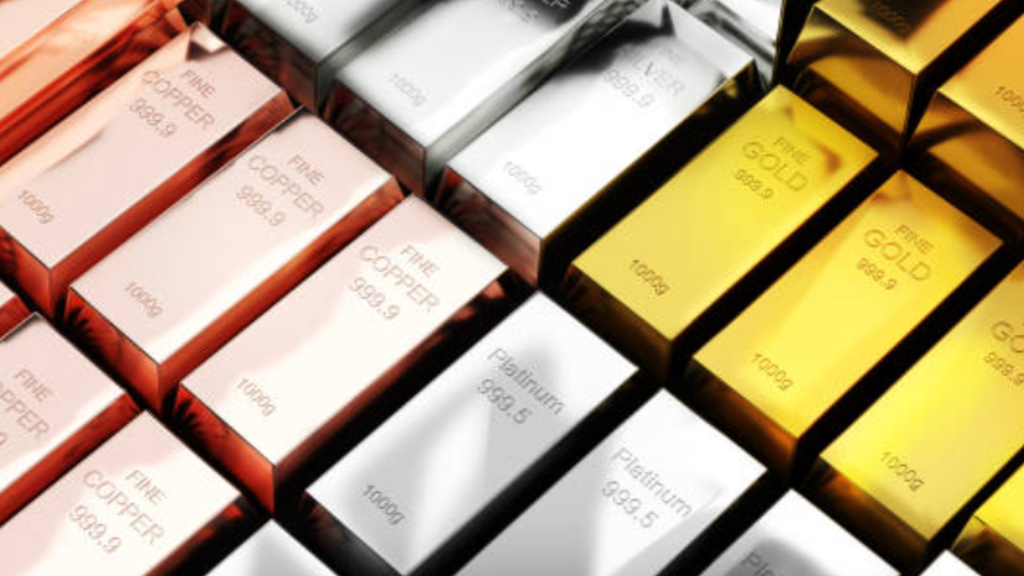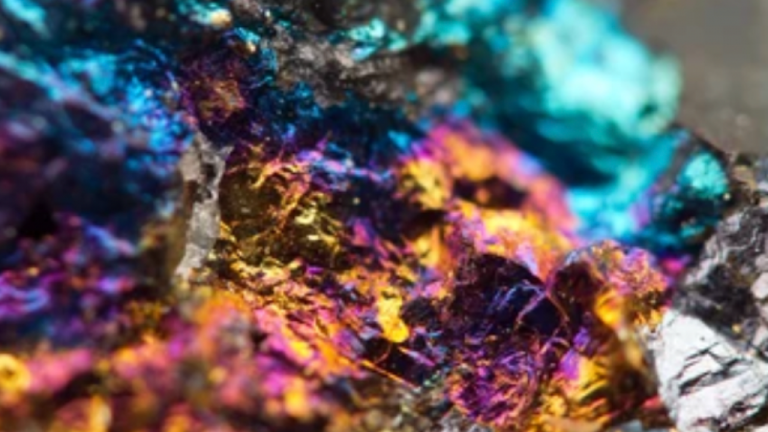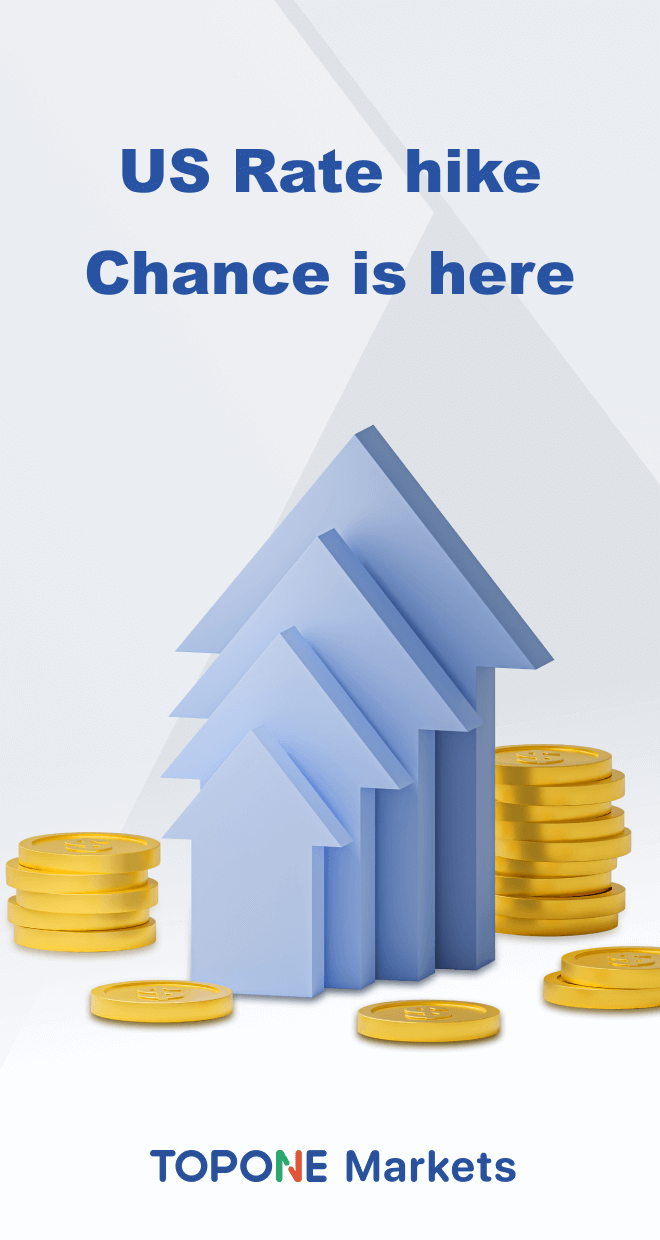
Inflation has been increasing in the United States to levels that would seriously alarm policymakers. At 7.9%, inflation has reached its highest level in 40 years, according to current figures. As a result of this, precious metals stocks have seen a rise.
It is also worth mentioning that the previous measurement of inflation does not account for the recent spike in oil and gas prices. Therefore, inflation figures will seem worse in the following months.
With geopolitical tensions growing and high inflation, precious metal equities are at the forefront. In addition, authorities may not raise interest rates aggressively because of the uncertainty caused by the Russia-Ukraine war.
In this uncertain environment, investors might gain exposure to actual gold or gold mining equities. Gold miners stocks are still appealing, notwithstanding the recent surge. With the jump in gold, cash flow visibility has ballooned, and gold miners will enhance dividend pay-out in 2022. Therefore, there are several suitable catalysts for precious metal equities.
Table of Contents
Introduction of Precious Metals
Gold
Gold is the granddaddy of all precious metals, so let us start there. Gold is unlike any other substance as a heat and electrical conductor as well as a durable, malleable metal. Besides its use as a basis for jewelry and as a form of currency, it has specific industrial applications in dentistry and electronics.
The value of gold is set by the market 24 hours a day, seven days a week. Gold’s price is less governed by the laws of supply and demand than other commodities. The fresh mine supply is considerably dwarfed by the sheer bulk of above-ground, hoarded gold. Put, when hoarders feel like selling, the price reduces. A fresh supply is swiftly absorbed when people desire to purchase, and gold prices are driven upward.
Silver
Unlike gold, the price of silver fluctuates between its perceived position as a store of value and its role as an industrial metal. For this reason, price swings in the silver market are more volatile than in gold.
As a result, while silver trades similarly to gold as a store of value, the industrial demand/supply equation for the metal has an equal impact on its price. This equation has always been subject to change due to new developments, such as:
Since the invention of the digital camera, silver has lost some of its lusters as a primary component of photographic film.
The growth of a massive middle class in the rising market nations of the East caused an exploding demand for electrical appliances, medical products, and other industrial things that require silver inputs. Silver’s characteristics make it a coveted commodity, from bearings to electrical connections.
The battery, superconductor, and microcircuit markets all employ silver.
Platinum
Platinum is traded 24/7 on the world’s commodities markets, like gold and silver. It typically tends to fetch a higher price (per troy ounce) than gold throughout regular periods of market and political stability simply since it is substantially rarer. Only a tiny fraction of the metal is removed from the earth’s crust yearly.
Palladium
Lesser known than the three metals mentioned above is palladium, which has more excellent industrial uses. Metals like palladium, a bright, silvery metal, are widely employed in producing electrical and industrial items. It may also be utilized in dentistry, medical, chemical applications, jewelry, and groundwater treatment.
More than 90 percent of this rare metal’s global supply originates from mines in Russia, South Africa, and Canada. It has atomic number 46 on the periodic table of elements.
Jewelers first utilized palladium in jewelry in 1939. When combined with yellow gold, the alloy yields a metal more robust than white gold. In 1967, the government of Tonga minted circulating palladium coins promoting the coronation of King Taufa’ahau Tupou IV. Palladium has been used in the currency for the first time.
10 Best Precious Metal Stocks to Buy Now
1. Rio Tinto
Rio Tinto (NYSE: RIO) is a multinational mining conglomerate with operations worldwide. It primarily concentrates on manufacturing industrial metals, particularly the three most extensively used ones — iron ore, aluminum, and copper.
Rio Tinto is a global leader in manufacturing aluminum. The corporation runs large-scale, high-quality bauxite mining, alumina refineries, and aluminum smelters. It is a trailblazer employing low-cost, carbon-free hydroelectricity to power its aluminum operations. Rio Tinto is also a leading producer of iron ore, a vital constituent of steel (the most-used metal alloy in the world). The company’s iron ore operations in Australia comprise an integrated network of world-class mining assets, processing centers, rail connections, and port terminals that help keep costs low. The company’s significant titanium and large-scale copper operations are welcome additions to the industry’s established leaders.
Rio Tinto intends to be a low-cost producer to help reduce the impact of metals price volatility. Combined with its diversity, Rio Tinto is a top pick for investors wanting broad exposure to the metals industry.
2. Nucor
Nucor (NYSE: NUE) is a steel and steel products conglomerate based in the United States, Canada, and Mexico. It also creates steel bars, plates, and beams, producing steel goods such as fasteners, pipes, and wires. Nucor’s leading industry is recycling and transporting ferrous and nonferrous scrap metals.
Nucor differs from most other steel makers in that it concentrates on operating minimills, which employ electric arc furnaces to melt scrap steel. It is less costly to melt iron than in standard blast furnaces. It also powers its facilities mostly with natural gas instead of coal, which costs less. Nucor is one of the world’s lowest-cost steel manufacturers because of its emphasis on reclaimed metals.
Because of its ecologically friendly and cost-effective business practices, the company has been able to make a profit throughout various economic situations. Consequently, investors looking for a lower-risk steelmaker may find it an appropriate company to buy.
3. Newmont (NEM)
Newmont stock has trended upward by 29 percent in the past six months as gold rises. The recent fall from highs appears like a fantastic accumulation opportunity for long-term investors.
NEW’s strong reserve base is one of the company’s perks. According to Newmont’s current reserves and resources, the company holds 96 million ounces of gold, and the corporation also owns 45 billion copper pounds of reserves and resources. A substantial reserve foundation enables constant output and cash flow visibility.
Another reason to prefer Newmont is the company’s excellent balance sheet. According to its annual report, Newmont had $5.0 billion in cash and cash equivalents at the end of December 2021. In addition, free cash flow for the corporation in 2021 was $2.6 billion. With the current spike in the gold price, FCF is projected to accelerate dramatically in 2022.
Newmont is well-positioned to increase dividends and accelerate share repurchases due to its healthy balance sheet and cash flow. Over the long-term, Newmont also plans to cut the all-in-sustaining cost of $800 to $900 an ounce. As a result, the EBITDA margin will rise even more.
4. Barrick Gold Corp. (GOLD)
Barrick Gold is another excellent name among precious metal companies. Unlike Newmont, the company’s stock trades at a reasonably reasonable forward P/E of 22.6. The GOLD stock also gives a dividend yield of 1.64 percent.
Barrick Gold is incredibly enticing because of the steady stream of dividends it generates. By 2021, the corporation generated a free cash flow of $1.9 billion. The corporation also completed 2021 with cash and equivalents of $5.3 billion. This affords Barrick significant financial flexibility for growth ventures.
According to Barrick, for every $100 per ounce upside in the gold price, the company’s free cash flow is anticipated to climb by $1.5 billion. Therefore, I would not be shocked if the firm achieves an FCF of over $3.0 billion in 2022.
In addition, Barrick’s all-in-sustaining cost for 2021 was $1,026 per ounce, which was relatively favorable. If gold upside persists in the following quarters, EBITDA margin improvement will be considerable.
Another item to remember is that Barrick has a strong reserve replacement ratio. For 2021, the corporation “more than replenished its gold reserves net of depletion at a higher grade.” As long as there is financial room to work with, exploration initiatives will keep the reserve viable.
In Q4 2021, Barrick announced a $1.0 billion share purchase. Dividends are projected to rise in 2022 due to an increase in the gold price, and GOLD stock consequently seems excellent for accumulation on dips.
5. Wheaton Precious Metals
Streaming giant Wheaton Precious Metals (NYSE: WPM) is one of the world’s largest companies. Mining firms receive an upfront payment from the streamer, which they may use to develop a project further. In return, it is granted the opportunity to acquire a predetermined percentage of the finished product at a predetermined price.
In terms of streaming contracts, Wheaton Precious Metals provides a wide range of options. Several major mining firms have granted it the right to acquire their metals, including gold, silver, palladium, and cobalt, under its agreements. Its streams include actively producing mines, as well as those in development.
The company’s contract portfolio permits it to acquire silver and gold at average per-ounce prices of $5.81 and $451 through 2025. It can then resell those metals for a profit at current market rates. With gold ending 2021 at around $1,800 per ounce and silver above $22, Wheaton made a significant profit on its precious metal streaming contracts. With its low-cost business style, this company is a good choice for anyone interested in investing in gold and silver.
6. Hecla Mining (HL)
Hecla is a gold and silver miner with a wide range of holdings. HL stock has increased by 20 percent in the last month as precious metals climb. The stock is primed for further rises with an excellent vision for output upside in 2022.
According to the company’s financial statements, Hecla’s silver reserves were at 200 million ounces in 2021. The corporation had 2,730,000 ounces of gold on hand at the same time.
For 2021, Hecla reported a revenue increase of 20 percent on a year-on-year basis to $807 million. Operating cash flow was $221 million, while free cash flow was $111 million for the same period. The firm is well-positioned for rapid expansion, thanks to a $443 million overall cash cushion.
3.6 million ounces of silver are expected to be produced in 2021 at the company’s Lucky Friday asset, a deep underground silver, lead, and zinc mine in northern Idaho’s Coeur d’Alene Mining District. For the current year, output from the asset is anticipated at 4.6 million ounces. With lowering cash costs and a rise in the silver price, Hecla is positioned for free cash flow upside in 2022.
Hecla’s gold and silver output forecast extends well beyond 2022. With multi-year growth visibility, HL stock appears good.
7. Kinross Gold (KGC)
KGC stock has been under-performer among precious metal equities, and KGC’s stock price has not risen in response to the recent increase in the gold price. The leading cause is Kinross Gold ceasing Russia operations. By 2022, the business had projected 13 percent of output from Russia.
On the other hand, the stock is appealing with a projected P/E of 12.1x. The cost has been reduced to account for the setback that has occurred. As cash flows grow from the output in other assets, KGC stock is projected to move upward from current levels.
Consider Kinross’ overall liquidity cushion of $1.9 billion in December 2021 from a business growth standpoint. Recently, the business made a strategic investment in Allegiant Gold. Because of the Russian output reduction, Kinross is likely to turn to inorganic sources for the remainder of its needs.
Kinross estimates the all-in-sustaining cost per ounce will be $1,138 in 2021. The firm is well-positioned for substantial free cash flow in 2022, with gold pricing near $2,000 an ounce, and this will contribute to the financial freedom to conduct aggressive exploration.
KGC stock appears to be a contrarian pick among precious metal equities. Some exposure can be regarded at present levels.
8. Franco-Nevada Corporation (FNV)
Franco-Nevada is a prominent gold-focused streaming and royalties firm established in Canada. With agreements on 325 mining assets, it manages a diverse portfolio of precious metals and royalty streams.
The streaming service can pay for new contracts out of regular income. Miners receive paid up advance from royalty and streaming firms. The right to purchase precious metals at a lower price in the future is their reward.
Early in November, Franco-Nevada issued its third-quarter financial report (Q3). Despite a fall in gold prices then, revenue grew 13 percent YOY to $316.3 million. It was a 9 percent year-over-year increase in adjusted net income, reaching $165.6 million, or 87 cents per diluted share. End-of-period liquidity was $346.7 million in cash and equivalents.
Following the news, CEO Paul Brink stated, “Higher energy prices have prompted us to enhance our 2021 Energy projection for the second time this year. Margins have increased this year due to the inflation-protected nature of our business model.”
FNV stock sits at $146, up 37 percent over the previous 12 months. However, FNV shares are not inexpensive, selling at 40.7 times forecast earnings and 22.2 times trailing sales. The 12-month median price projection for Franco-Nevada shares is $153. A drop in the share price of FNV can represent an opportunity for prospective buyers.
9. Freeport-McMoRan (FCX)
Freeport-McMoRan, situated in Phoenix, Arizona, is the world’s largest copper producer. The corporation runs assets that include the Indonesian Grasberg mining complex, the most significant copper and gold mine globally in recoverable reserves.
Copper has become a vital commodity in worldwide decarbonization plans, including electric vehicles (EVs), solar panels, and intelligent buildings. As the globe becomes increasingly digitalized and electric vehicles (EVs) become more widely used, market analysts, predict that copper prices will rise.
Analysts at Goldman Sachs remain positive on the copper market. In its recent copper price study, the investment bank said, ” ‘as the cross-asset investor’s preferred gauge for global growth, copper frequently trades with fluctuations in wider macro sentiment. However, it is vital to recall that copper remains a physical item whose futures price is ultimately related to the capacity to supply physical units into the exchange. should those supplies deplete, its price must balance the market, independent of what is going in the larger economy.'”
Freeport reported Q4 2021 results on Jan. 26. Total revenue increased by 38% year-over-year to $6.2bn. The company’s net income climbed from $708 million to $1.11 billion, or 74 cents per diluted share. Cash and equivalents closed the quarter at $8.1 billion.
Copper prices continue to climb as stocks have plummeted to record low levels. As a result of the decrease in reserves, the average copper price per pound increased by 47 percent year-over-year to $4.33. Meanwhile, this jump in copper prices helped yield a 155 percent YOY increase in Freeport’s operational cash flows to $7.7 billion.
The corporation has vowed to return up to 50 percent of its cash flow to investors via share repurchases and variable dividends. FCX stock is presently trading at about $47, up 35 percent over the previous 12 months. Shares are priced at 12.55 times forecast profits and 2.79 times trailing sales. Freeport-stock McMoRan’s is expected to trade at a median price of $48 next year.
10. Perpetua Resources Corp. (NASDAQ: PPTA)
As a mineral exploration company, Perpetua Resources Corp. (NASDAQ: PPTA) does business. The firm has been in the limelight as one of the stocks on which billionaire John Paulson is most bullish. Perpetua Resources Corp. (NASDAQ: PPTA) is working on one of the most appealing gold properties in the market and has no debt. The company has $56 million in cash at the end of September 2021, equating to a financial runway of around 23 months.
While Perpetua Resources Corp. (NASDAQ: PPTA) is still in its infancy, the company also intends to search for precious metals other than gold. End-of-last-year stock recommendations from B Riley and HC Wainwright were positive.
Among the hedge funds followed by Insider Monkey, New York-based investment company Paulson & Co is a prominent stakeholder in Perpetua Resources Corp. (NASDAQ: PPTA), with 24 million shares valued at more than $123 million.
At the end of the third quarter of 2021, 8 hedge funds in the database of Insider Monkey owned holdings worth $152 million in Perpetua Resources Corp. (NASDAQ: PPTA), up from 3 in the previous quarter worth $184 million.
Final Thoughts
When economic conditions worsen quickly, precious metal prices can become highly volatile, so investors should carefully consider whether or not they can stomach the ups and downs.
If the sector’s upside potential appears enticing, concentrate on trying to find the metals stocks best positioned to gain from increased prices. Since their low-cost operations should help cushion the impact if market circumstances abruptly alter, the best starting point is with these industry leaders. Then stick on for what can be a rocky ride in the short term, knowing that the long-term potential might make the volatility worth it in the end.




